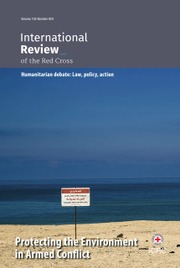International humanitarian law (IHL) represents a balancing of priorities that have often been seen as being in tension: military necessity, on the one hand, and considerations of humanity, on the other. Inherent in this balancing act is the idea that military necessity and humanitarian imperatives are equally valid priorities that can be accommodated under the same legal framework to achieve related goals, allowing the military to fight effectively while avoiding needless suffering and destruction.
Accordingly, the negotiation of IHL treaties involves diplomats, representatives of the humanitarian community, and the armed forces working together to find common ground. By working together, the armed forces and the humanitarian community have crafted a body of law that effectively balances oft-competing priorities and optimizes military necessity and humanitarian considerations.
While many analyze military decision-making from outside the ranks of States’ armed forces, ultimately, the ones applying IHL during real-life battlefield situations are the decision-makers inside these structures. Yet, for various reasons, they express themselves less publicly on matters of IHL in academic journals, including the Review.
With the articles selected for this issue, the Review has created a space to put the spotlight on States’ armed forces so as to hear from them – and about them – first-hand, in a contemporary perspective. Through this, the Review sincerely hopes that military lawyers and operators will more often find their way to our journal’s pages in the future, so as to share their experiences with its readers around the world on topics of interest to both the humanitarian and military communities.


